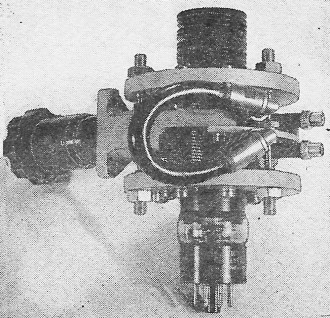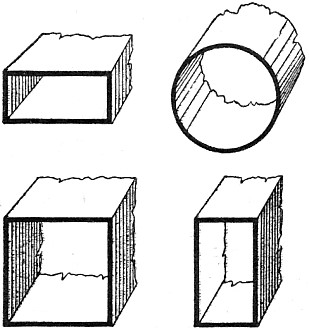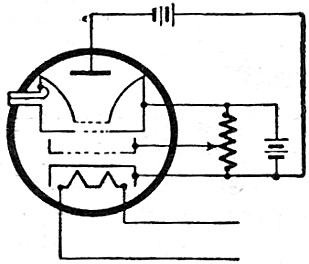Microwaves Part I - Introductory and General |
|
In 1945 when this series was published in Radio-Craft magazine, microwaves were pretty much the realm of corporate and university research laboratories and - often coincidentally - secret Department of War projects. Radar was the primary application, although some work was being done on high bandwidth communications by the aforementioned entities, in some cases following in the footsteps of amateur radio operator's discoveries about how the higher frequencies were affected by the ionized layers of the Earth's atmosphere. Immediately following the end of World War II, the government began declassifying a lot of information learned about microwave, and magazines were fast to pick up on it. In fact, there were instances where editors saw fit to write columns asserting their right to do so when criticisms were heaped upon them by readers accusing them of divulging critical security-related data.* Captain Skinner, of the U.S. Army Air Force's Training Aids Division, contributed this information, so obviously it was approved for release by the government. See Microwaves Part I, Part II, Part III. See "Censorship vs. Radio Progress," by Hugo Gernsback Microwaves Part I - Introductory and General
Sperry 410R Klystron, showing coaxial feedback cable and frequency adjustment knob. By Capt. Eugene F. Skinner* One of the newest fields being opened to the radio world, and one which the amateur should be able to enter soon, is that of Microwaves. The subject of microwaves should be approached with the idea that there is nothing mysterious about them. In using microwaves the experimenter is merely making another move up the radio spectrum, similar to his previous move from long waves to short waves and later from short waves to the ultra-high-frequencies. Radio waves whose wave lengths are less than one meter have been designated as microwaves. Actually, the division between microwaves and ultra-high-frequencies is not as precise as the difference in names might imply. Very little difference exists between the higher of the ultra-high-frequencies and the lower frequency microwaves. They are in fact identical where they run into each other, and there are numerous component parts and applications which apply equally well to both frequency ranges. As radio frequencies get higher and higher, they begin to assume many of the characteristics of light. In the microwave field these effects are very noticeable. This is an aid to handling them, but has disadvantages also. At these frequencies, it is a very simple matter to focus and beam the energy so a very accurate determination of . where the energy is going is possible. At lower frequencies, one just has to pour in the power and wonder where it is being radiated. Even if he knows, he can do relatively little to control it. At lower frequencies, the local conditions affect the coverage seriously and. cannot be adequately controlled due to the tremendous size of the antenna arrays. For microwaves, the elements are small, and reflectors, especially of the parabolic type, so focus and beam the radiation that the local conditions have little effect. The antenna arrays will fit nicely into the space limitations that most amateurs have. There is no need for large bulky arrays when a quarter or half-wavelength is only a few inches. Microwaves seem to thrive on bad weather. Radar and other wartime applications have brought microwave techniques into the practical field. Postwar applications will reach into many branches of electronics. Radio-Craft is therefore starting a series covering these important waves. The line-of-sight usable distance naturally limits the uses of microwaves considerably, and permits them to be used only for special installations. Also, "Shadows" are caused by most solid objects larger than the wave length being used, and there is negligible bending. Sky waves are unknown to date, but in any case in which they might be noticed, they would be rare and could not be depended upon for any practical use. This will discourage DX work on the part of amateurs. However, many other characteristics make their use extremely desirable, and repeater stations strategically placed could conceivably increase their range. It is probable that a "mother" set and several repeater stations might cost no more than one complete station for lower frequencies. In the wave length band between one centimeter and one meter, there is a range of 300,000 to 30,000,000 kilocycles, making available almost 3,000,000 channels for amplitude modulation and 150,000 for frequency modulation. These numbers can be amplified to an almost infinite number when the distance limitations that exist are remembered, and that high directivity will permit several stations on the same frequency in the immediate vicinity of one another.
Fig. 1 - Wave guides may have various shapes. The high directivity permitted by beaming the output makes it possible to use extremely low power outputs, even down to a fraction of a watt. For most purposes the output of a single tube is many times more powerful than is required. To date, frequency controls for the transmitter necessitate careful control of temperature and power, and are somewhat troublesome at times. However, dependable methods of locking the frequency of the receiver to that of the transmitter exists. Crystal control is not possible to a satisfactory degree asset, because a crystal cannot be cut thin enough for these frequencies, and any frequency multiplier system merely multiplies the errors in the crystals. Greater accuracy and frequency stability is being developed in crystals, and it is possible that in the future crystal control may become practical. Little trouble is anticipated from interference on the microwaves. Static, both man-made and natural, is practically non-existent. In addition to getting rid of bothersome noise, this makes lower power requirements possible, due to the noise-to-signal ratio. Harmless diathermy effects may be noticed, but there is no need to worry about any damaging results from them. In using microwaves, the mechanical and electrical considerations are of about equal importance. Parabolic reflectors may be used with the antennas, and the physical or mechanical perfection of these reflectors and the dimensions of the radiator itself determine the sharpness of focus of the beam, in the same manner that a reflector in a flashlight and the dimension of the bulb determines the characteristics of the light beam. "High-Frequency-Plumbing," or wave guides are used to transfer the energy from one point to another instead of coaxial cables. Coaxial cables may be used, but they are generally unsatisfactory except when used for very short distances. These wave guides may be tubular like pipe, or of rectangular cross-section area, and may be of a variety of styles (Fig. 1). Circuit layouts must be of such a nature that there is a minimum of inductance and capacitance involved. Such minute quantities are required that the tubes are so designed as to include the quantities required for resonance within the tube. From this, it can be seen that such things as interelectrode capacitance are of great importance. Naturally, with such physical characteristics involved, the overall size of a system is automatically much smaller. A mechanical consideration in the design of the tubes is the transit time of the electrons, which becomes of great importance. The wave lengths are so very short that if the tube is of appreciable size, the time required for an electron to travel from one element to another might readily be a considerable portion of a cycle, or even several cycles, as in the Klystron. Experiments have been made with satisfactory results for using microwaves in conjunction with moving railroad trains for control and conversation. Considerable success has been attained in such work, and certain railroads now experimenting with lower frequencies intend to move into the microwave region as soon as it becomes possible to get equipment. Many of the applications are shrouded in wartime secrecy, and will undoubtedly be revealed at a later date. Aircraft-to-ground and aircraft-to-air-craft communications should adapt themselves readily to this means, especially where a large degree of privacy is desirable. The privacy of beamed microwaves is so great that it is comparable to talking over the telephone. A few of the tubes have already been partially released, and include the Sperry Klystron and the General Electric Lighthouse tubes. Two articles on the Klystron by the author have previously been published in Radio-Craft.
Fig. 2 - Simplicity of microwave hookups is typified in this basic Klystron reflex circuit. Where the Ham Comes In Naturally, the amateur wants to know just where he fits into the picture. In the past, "hams" have been a good market for radio parts, and have been responsible for arousing a great deal of interest in radio among people who previously thought of it only in terms of turning on a switch and listening to a program. He is responsible to a large degree for the advancement of this science since its very introduction. There are agencies looking out for the interests of the "hams" in Washington, and sections of the microwave band will be made available for amateur use after the present restrictions are removed. Soon the day should come when the amateur will again be able to have his demands supplied, and at costs that will be considerably lower than ever before. In addition to the fields he is already familiar with, microwaves should be within reach of his pocketbook. The radio industry has been greatly expanded as a result of the demands of war, and it is reasonable to assume that these plants which have expanded or opened will want to continue as much production as there is demand for. Considerable competition and low prices should result. This will benefit the amateur, because he gets no financial return on his radio investment, and is, therefore, limited as to the amount he can afford to spend. Microwave parts production is tremendous. A large postwar market is necessary, or these plants must close. The "ham" will be able to buy those items he needs, which will probably be designed with sufficient latitude to cover an entire ham band, and by adept use of a hacksaw, pipe, sheet metal, and a few other readily available and cheap items, can construct for himself the other items he needs. Circuits are simple - note the Klystron hookup of Fig. 2. In addition to reducing the expense, this will stir up more interest in ham, because most of the kick is the "tinkering" and experimenting, and there is great satisfaction of having produced something with one's own hands. If things don't work out the first time, a challenge is presented that is far from insurmountable, and a few inches of pipe or sheet metal are so inexpensive that the experimenter is not deterred from beginning again. Microwaves furnish a wider field for the amateur and experimenter than any of the others he has so successfully ex-plored in the past. * "Hq. AAF, Office, Asst. Chief of Air Staff, Training Aids Division.
Posted January 20, 2021 |
|



